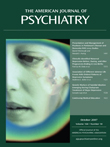The word “stealth” in the title of Goldberg’s slender book describes the author’s easily verifiable observation that unspoken and unrecognized moral positions have “insinuated themselves” in the daily practice of psychiatry, constituting a proud bulwark of unexamined “correctness,” which survives independently of its therapeutic effects. Early in the book appears an analyst whose patient confessed that she had just stolen a dress from a department store and asked him what he thought of her. “I immediately told her ‘you are a thief.’” End of story? No! Probably sooner rather than later the patient quit treatment and perhaps even increased the quantity of her thefts to meet her financial obligations to a number of new therapists. Laws like the Tarasoff decision, fears of malpractice, and elaborate professional codes of ethics rarely suffice to guide our responses to patients’ immoral or amoral, dishonest, or ugly behaviors. In the example just cited above, there were some other possible responses. First, the patient might have wanted to be helped in understanding why she needed to violate her own standards. The therapist might have waited until he understood more about the subjective state of the patient who stole and her weak inner voice questioning the theft.
But even in conceptualizing the psychological details that comprised the patient’s behavior, Goldberg finds traditional analytic theory inadequate. Freud did not prepare us adequately for ethical responses with his structures of the unconscious Id, with its nonmoral imperious instincts striving for release, the often hypermoral Super-ego, a kingdom of duties and behests mysteriously bequeathed by the child’s parents, and the Ego as an erratic doubting judge striving to be good. Nor does one analytic or psychotherapeutic system provide more help than any other. Through well selected treatment examples, Goldberg shows us the weakness of prevailing assumptions and their fundamental inapplicability.
The Ten Commandments of the Old Testament and the “Golden Rule,” likewise, are inadequate guides. As Nietzsche taught us, “submission to morality can be slavish or vain or selfish or resigned…or an act of desperation like submission to a prince; in itself it is nothing moral”
(1) . In any case, “absolutes in psychoanalysis and psychotherapy are (mere) conventions that do us more harm than good” (p. 100). Neither religious behests nor moral absolutes cover a complex topic such as violation of confidentiality deemed vital to obtain collegial help with a difficult patient or needed in order to write a scientific clinical article. At the opposite pole of invariant standards, the author finds little value in “moral relativism.” The principle “anything goes” is far out of step with a current American culture of corporate malfeasance, preoccupation with terrorism, and conservative religious revivalism.
So, Goldberg turns to Philosophers for help and shifts his therapeutic focus from morality to ethics. Whereas morality examines what is imperative and obligatory—the “thou should and must” requirements—ethics is more concerned with the questions “What is good”; “what is the good life?” Answers are always preliminary and swathed in an atmosphere of uncertainty with the necessity to doubt, to persistently puzzle about meaning, and to consider the uniqueness of each apparent violation of moral or ethical standards. We can be quite kind, fair, and loving, and yet our own even fully examined values, rules, and standards may not apply at all to the inner lives and actions of our patients. We are compelled to move away from the answer to the question if something should, ought, or must be done to the question why a unique individual in special circumstances with a special emotional history might chose path A or B.
Goldberg finds the “discourse ethics” of J. Habermas helpful here. “Moral questions can only be solved by participants finding concrete answers in particular cases through a sustained effort to accept the perspectives of all involved” (
2, p. 24). This position requires a special kind of neutrality from the therapist, requiring a “move from an individual perspective on principles and judgments to that of a shared or communicative one based on argument and interpretation” (p. 111). Above all, our implicit assumptions about both ethics and morality need to become explicit, so they can be empirically tested, studied, compared, and debated with patients and peers alike. To be asked to be explicit about our moral standards of course does not suggest we abandon them.
The reviewer highly recommends this book as a valuable stimulus to clarify our therapeutic stance toward those many patients who so often confront us with behaviors that make us uneasy with our own lifelong therapeutic belief system distinguishing right from wrong.

